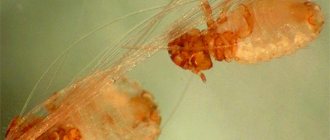If, while petting your cat, you feel a certain growth on the back of her neck, know that you cannot ignore it. But there’s no need to be alarmed prematurely either. Perhaps it's just a lipoma. Lipoma in a cat is one of the most common benign neoplasms in animals, consisting of adipose tissue. It is formed in the subcutaneous tissue and in those internal organs that have a fatty layer. It can penetrate deep into the body, spreading muscles and vascular bundles, to the periosteum. Lipoma usually progresses slowly. It can be removed through a simple surgical operation.
What is a wen
A wen is a benign soft formation on the skin in the form of a lump. It is filled with overgrown fat. There are also lipomas containing connective tissue; they have a more dense structure.
Do cats have wen? Skin lipoma can form in any type of pet, as well as in humans. After all, such a neoplasm grows from subcutaneous fat, which is found in all mammals. The appearance of such a tumor indicates a disorder of lipid metabolism in the body.
A photo of a cat's wen can be seen below.
Establishing diagnosis
Due to the fact that lipomas do not cause pain, owners often do not pay attention to them. However, after detecting a formation in a cat, it is important to consult a doctor to determine the correct diagnosis. This is explained by the fact that only in the clinic will they be able to determine whether it is a wen or other types of malignant tumor. And also prevent the growth of the tumor. Wen is not an infectious disease and therefore cannot be transmitted to people or other pets.
The veterinarian carries out a number of preliminary measures:
- signs of a wen in a cat are determined by external examination;
- X-ray, ultrasound; puncture biopsy.
© shutterstock
When palpating a cat, single wen can be easily felt. They are soft and easy to move. An x-ray will determine the presence of metastases. In cases where wen is located in hard-to-reach areas, ultrasound will help determine the need for surgery. Using a biopsy, the type of cells that make up an organ or formation in it is determined. A puncture biopsy will clarify the nature of the tumor: benign or malignant. Cytological examination is carried out before surgery.
Is it dangerous
Lipoma is a painless formation. However, a large wen can cause a lot of inconvenience to an animal:
- A lipoma in the neck can put pressure on blood vessels and the trachea. This leads to breathing problems and brain hypoxia.
- Wen on the paws can make walking difficult.
- A large tumor on the body can put pressure on internal organs and disrupt their function.
A cat's fatty tissue grows very slowly. But under unfavorable conditions, it can degenerate into a malignant neoplasm - liposarcoma. Most often this happens when the lipoma is traumatized. Therefore, the area of skin with a wen should be protected from rough mechanical influences and friction.
What is the outcome of the pathology?
If the size of the benign neoplasm is small, the nerve fibers are not pinched and the operation is performed on time, then there is no threat to the life and health of the cat. In rare cases, relapses of the pathology are possible, which are more difficult to treat and are more typical for the infiltrating form of the disease in a cat. If you delay therapeutic actions or self-medicate, there is a high probability of developing complications. The most dangerous consequence is the degeneration of the neoplasm into cancer. Recently, veterinarians have been trying to eliminate lipomas using radiotherapy, which is less traumatic, more effective and less likely to lead to relapses.
Causes
The main cause of wen in cats is a lack of an enzyme in the body that breaks down lipids. Because of this, the metabolism of animals is disrupted. The adipose tissue grows excessively and a lipoma appears on the skin.
It is widely believed that such neoplasms occur only in overweight animals. However, it is not. Wen can also occur in a cat with a normal or thin build. The following factors can provoke the appearance of lipomas:
- hereditary predisposition;
- hormonal disorders;
- chronic endocrine pathologies;
- low mobility of the animal;
- excess fat in the diet.
Lipomas are more common in older cats. After all, older animals often have metabolic disorders. However, wen can also occur in young pets and even kittens.
What is the problem?
Its structure helps to distinguish a lipoma in a cat from a malignant or other dangerous tumor. The wen is soft to the touch and forms under the skin. Its main difference is the absence of pain. It can form on any part of a pet’s body where there is adipose tissue, but in most cases a lipoma is observed in a cat on the withers or abdomen. Veterinarians note that the main source due to which a benign tumor appears is a disrupted metabolic process. There are other factors that lead to lipoma:
- heredity;
- hormonal imbalance in the cat’s body;
- weakening of muscles due to low activity of the animal;
- diseases of the endocrine system;
- elderly age.
Pathological growth of adipose tissue is influenced by enzymatic deficiency. If a cat's lipase level is reduced, the risk of lipoma increases. This is precisely what explains the fact that a benign neoplasm occurs not only in obese felines, but also in thin breeds of cats.
Symptoms and types of lipoma
Veterinary experts distinguish the following types of wen in cats:
- Simple or non-infiltrating lipomas. Such neoplasms are localized only in the subcutaneous tissue and do not penetrate other tissues. They have clear boundaries. Simple wen can be easily removed surgically. They rarely undergo malignancy (malignancy).
- Infiltrative wen. This is a rather dangerous type of neoplasm. The tumor affects not only the subcutaneous layers, but also grows into the muscles and blood vessels. It has no clear boundaries and is growing rapidly. Such wen most often degenerates into sarcoma.
Lipomas can be either single or multiple. If there are a large number of fatty tumors in an animal, veterinarians make a diagnosis of lipomatosis.
Wen in cats can appear on any part of the skin. Most often, these neoplasms do not cause a deterioration in the animal’s well-being. However, in some cases the following additional symptoms may be observed:
- Difficulty breathing. If a lipoma forms in the cervical region, it can prevent the animal from breathing freely.
- Lethargy. Apathy in cats is more often observed with infiltrative lipomas that grow into blood vessels. Due to chronic hypoxia, the pet becomes apathetic and drowsy.
- Lameness. If the fatty tumor is located on the paws or in the armpits, it can create discomfort when walking.
- Neurological disorders (convulsions, unsteadiness of gait, severe weakness). These are very alarming signs that can be observed when a wen grows on a cat’s head. Large lipomas in the skull area can compress the vessels that carry blood to the brain. This can lead to severe hypoxia of the central nervous system and death of the animal.
In addition, after injury, lipomas can become inflamed and fester. The wen increases in size, becomes red and painful. At the same time, the animal’s temperature rises and its general condition worsens.
Mastopathy
Mastopathy can be classified as benign subcutaneous formations that can occur in the mammary gland of a cat and bring it discomfort, even pain. Subcutaneous lumps appear in the mammary gland. Although it is absolutely possible that the mammary gland may enlarge for another reason. For example, the mammary gland can enlarge during pregnancy. It is noteworthy that during false pregnancy the mammary gland can not only swell, but also secrete a little milk. But within a short time everything should return to normal.
Mastopathy is a permanent pathological transformation in the tissues of the mammary gland. They observe the appearance of neoplasms, as well as other abnormal processes. Formations in the form of lumps in the mammary gland can be felt during palpation. They are soft and slightly elastic in nature. Mastopathy in dogs cannot be classified as an oncological disease, but it can be a harbinger of such a disease. Cats over 6-7 years of age are most prone to mastopathy.
There are two forms of mastopathy in cats:
- Diffuse mastopathy. The first sign of this form is the appearance of pain in the mammary gland shortly before estrus. Upon palpation in the chest, you can feel a formation similar to a bag of shot. The diffuse form may be a precursor to the fibrocystic form.
- Fibrocystic mastopathy. In the mammary gland, compacted painful nodules form, which tend to grow. Lumps on the chest can be either single or multiple, but are always easily identified by palpation. This diagnosis is most often made in cats over 6 years of age.
Fibrinous cystic mastopathy of severe generalized form. All mammary glands are involved in the process.
To recognize mastopathy in time, you need to take a close look at the following symptoms:
- Noticeable enlargement of the mammary glands. When palpated, you may notice graininess, lobulation or stringiness.
- Various pathological discharges from the gland may appear: blood, ichor or colostrum.
- The cat may be in pain. At the same time, she will try to lick the glands and will be restless. It is difficult to notice any deviations from the norm, because the formation can remain the same size for a long time. The dimensions of the nodule can change only in the case of false or normal pregnancy.
- If treatment is not started on time, the dog’s general condition worsens sharply. He may refuse to eat, but increase his need to drink. Apathy is clearly visible in behavior. Nearby lymph nodes may grow noticeably. Ulcers and suppurations may appear. With further inaction, the process spreads to adjacent tissues. In this case, the animal’s skin in this area becomes too hot and may even lose hair.
It is very important to recognize the stage at which mastopathy is located. In the early stages, the use of homeopathic medicines and diet is sufficient. The diffuse form can be cured with hormonal drugs and antibiotics.
Difference from dangerous tumors
How to distinguish a tumor from a wen in a cat? This question often interests animal owners. It should be noted that lipoma is also a tumor, but benign. It can be differentiated from dangerous malignant neoplasms by the following characteristics:
- A cancerous tumor usually has a bumpy surface and indistinct edges. Lipoma looks like a smooth lump with clear boundaries.
- Malignant neoplasms grow rapidly. Non-infiltrative wen increases in size very slowly.
- Lipoma has a soft consistency because it is made of fat. The structure of dangerous tumors is usually hard and elastic.
It is important to remember that infiltrative lipomas can be very similar to malignant tumors. Such wen are characterized by rapid growth. Therefore, it is very difficult to make a diagnosis yourself at home. It is possible to distinguish a lipoma from dangerous formations only with the help of laboratory tests.
Why you can’t give up when fighting a tumor on your cat’s stomach
A tumor in a cat’s stomach is one of the most mysterious diseases, which even today has not been fully studied by doctors, and therefore can disappear as suddenly as it appeared, or give multiple metastases, and then take root throughout the body. Remember that by stopping the fight against a tumor in a cat, you are thereby putting an end to the life of your pet; she can die at any moment due to your laziness and unwillingness to fight to the end. Veterinary doctors are doing everything in their power to save another life and a grateful animal jumped into your lap every day.
What not to do
Most often, the owner, while stroking the pet, accidentally discovers a wen on the cat. What to do in this case? First of all, you should not try to fight lipoma on your own. Self-treatment can lead to disastrous results.
Under no circumstances should you squeeze or pierce the wen. Any trauma to the tumor can lead to its suppuration or malignancy. It is impossible to remove lipoma at home by any means.
If you find a wen in a cat, you should immediately show your pet to a veterinarian. Only a specialist can distinguish a lipoma from malignant neoplasms and provide qualified treatment.
Disease prognosis
The prognosis of the disease, subject to surgical intervention, is favorable, especially if the size of the wen is small and the cat is in good physical condition. Relapses of the disease are rare. Almost all cases of relapse relate to infiltrating variants of the disease. Recently, veterinarians have been practicing radiotherapy for such forms of the disease, which has significantly increased the percentage of cases of complete recovery.
Lipoma or wen are diseases for which self-medication is unacceptable. At best it will be ineffective, and at worst it will be harmful. Therefore, the only possible way out in such a situation is to visit a veterinary clinic.
Diagnostics
The veterinarian examines the animal and palpates the tumor. A biopsy is performed to determine the nature of the tumor. Using a puncture needle, the contents of the tumor are taken for analysis. The biomaterial is sent for cytological examination. This allows you to accurately determine the benign or malignant nature of the tumor and determine its structure.
For infiltrative lipomas, a CT or MRI examination is additionally prescribed. This allows you to determine the degree of germination of the wen into the vessels and muscles.
What to do if there is a lump under the skin
If a cat has a lump under the skin, you need to contact a veterinarian who will conduct the necessary tests, establish a diagnosis and prescribe treatment.
Neoplasms are diagnosed using:
- medical examination;
- urine and blood tests;
- Ultrasound;
- endoscopy;
- biopsies.
If oncology or tumors that cause discomfort in the animal are detected, radical therapy is prescribed. In other cases, conservative treatment is acceptable.
If the lump bleeds
Bleeding tumors are life-threatening for your pet, so you cannot do without the help of a veterinarian. To prevent contamination of the wound, the lump is treated with chlorhexidine and bandaged with a sterile bandage. If the formation bleeds, it should not be wetted, cauterized with alcohol-based products, or lubricated with cream without a doctor’s prescription.
Lump with pus
Seals with purulent contents require caution. They should not be pierced or squeezed out to avoid infection and injury to internal organs. If the tumor bursts on its own, the fluid that has accumulated under the skin may break out. The wound is treated with an antiseptic that does not contain alcohol.
A common reason for the appearance of pus-filled bumps is the final stage of cancer. In cats, the mammary glands are affected, and in males, the testes are affected. If the disease is advanced, the veterinarian will prescribe painkillers.
Treatment
If the lipoma is small, grows slowly and does not cause any particular inconvenience to the animal, then dynamic observation is recommended. In this case, it is necessary to regularly show the cat to the veterinarian. The doctor will monitor changes in the size of the tumor.
If the wen poses a danger to the health of the animal, then it is necessary to remove the tumor. It is important to remember that it is impossible to cure lipoma with medications or folk remedies. The only way to get rid of a fatty tumor is through surgery.
Surgery to remove a lipoma requires preparation. The day before surgery, you must stop feeding the cat. During this period, the animal can only be given clean water. You should also inform the surgeon about all medications your pet is taking.
Fat pads are usually removed under local anesthesia. However, for operations on very large tumors, general anesthesia is used. For non-infiltrating lipomas, surgery is easy. The doctor makes a small incision in the animal's skin, removes the tumor and stitches the wound.
Infiltrative wen requires more complex surgical intervention. It is necessary to remove not only the lipoma itself, but also part of the muscle tissue adjacent to the tumor. When suppuration occurs, it is necessary to drain the tumor cavity.
Treatment of tumors in cats on the abdomen
Over the past few years, significant progress has been made in the treatment of tumors, the type of treatment being selected depending on the type of tumor. After an examination by a veterinarian, the stage and type of tumor are first determined, and then a decision is made on chemotherapy. The treatment of the tumor must also be chosen by the doctor; the patient’s task is to follow the doctor’s prescription ; in general, there are several ways to treat tumors. For many neoplasms, chemotherapy is used as one of the most gentle treatment methods.
And thanks to the body’s ability to quickly absorb everything, chemotherapy is one of the fastest-acting methods of treatment. It is also possible that the doctor will prescribe radiation therapy, which is prescribed for such tumors and is not recommended for surgical intervention. Increasingly they are resorting to chemotherapy, as well as laser removal. It should be borne in mind that all kinds of drops and tinctures that promise an effect from the first use are most likely simply not effective, and in some cases are simply dangerous to the health of the animal.
Any treatment should be prescribed by a veterinarian, preferably one who has seen your animal more than once and can help with useful advice, as well as promptly come to your home if the cat suddenly becomes ill.
Why does a tumor appear on a cat's stomach?
Where a tumor can form can occur in the most unexpected place. A tumor in cats on the abdomen is the most common occurrence in pets over 10 years of age.
We can safely assume that the age of ten is the most dangerous in terms of all kinds of diseases, since it is then that various sores begin to form, which gently but unobtrusively indicate to the owner that he needs to be especially attentive to his furry pet and devote more time to its health. Remember that a tumor can form anywhere, even in a place where no one expected these tumors, for example, near the eye, in the ear.
Rehabilitation
The duration of the rehabilitation period after surgery depends on the nature of the lipoma. Restoring your pet’s health after removal of large infiltrative lipomas can take a long time. During this period, the cat needs special care.
It is very important to monitor the condition of the seams. At the slightest suspicion of inflammation, the animal should be taken to a veterinarian. After the operation, you need to put a special protective collar on the cat so that the pet does not lick the wound.
It is also necessary to ensure that the postoperative bandage fits snugly to the body. If the bandages are loose or dirty, then it is necessary to bandage them.
After removing a wen on a cat’s abdomen, a special bandage should be used. This will help protect the postoperative suture from infection.
Clinic
Older cats are most often affected. These animals suffer much less often than their canine counterparts. If any formation appears on the skin of an animal, you should immediately seek qualified medical help to exclude a cancerous tumor and carry out treatment in a timely manner.
The symptoms are always the same; swelling appears on some part of the body. She can remain in this position for a long period of time. Over time it grows, the sizes may vary. The pet's general condition does not suffer, it may cause discomfort when walking or lying down, depending on the location of the wen.
Veterinarians, having carried out an examination and diagnosis, remove the tumor, followed by a histological examination of the cells.
Is the operation effective?
Can lipomas reappear after surgery? In 70% of cases, no recurrence of tumors is observed. Veterinary experts have found that removing the wen promotes the overall health of the body and prolongs the life of the pet by several years.
The situation becomes somewhat more complicated if the cat suffers from multiple lipomas (lipomatosis). In this case, after the operation it is necessary to review the pet’s diet. You may need to follow a lifelong fat-restricted diet, as well as take medications that normalize lipid metabolism. This will help prevent the recurrence of lipomas.











